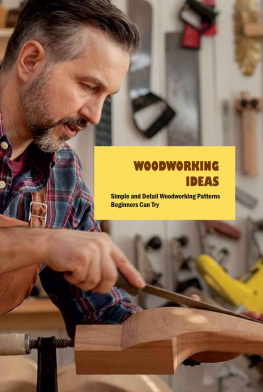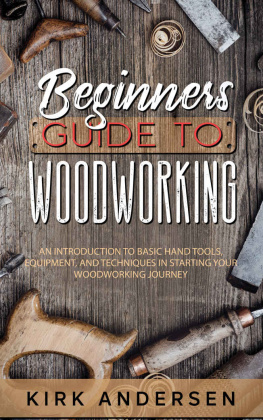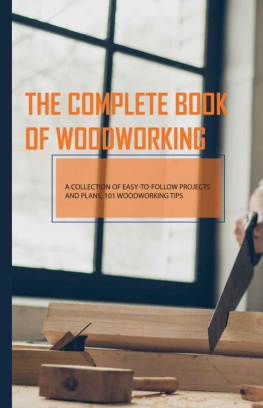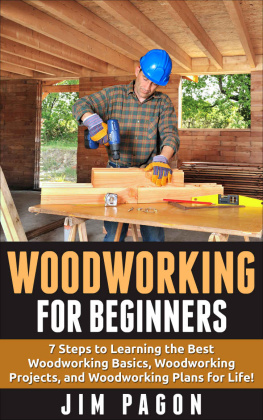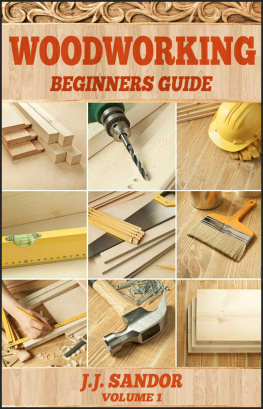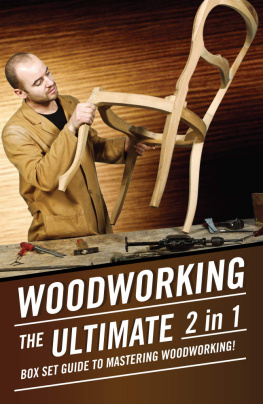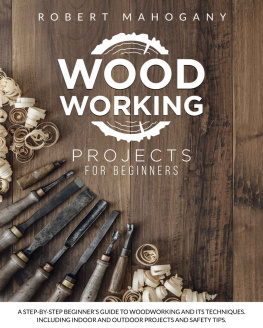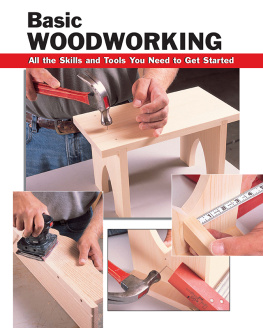WOODWORKING FOR BEGINNERS
Woodworking Tips, Tools, Projects
&
Finishing Techniques
3 BOOKS IN 1
NILS JOHANSSON
Copyright
All rights reserved. No part of this book may be reproduced in any form or by any electronic, print or mechanical means, including information storage and retrieval systems, without permission in writing from the publisher.
Copyright 2020 Nils Johansson
Disclaimer
Purchasing this book can be seen as consent to the fact that both the publisher and the author of this book are in no way experts on the topics discussed within. This book is produced with the goal of providing information that is as accurate and reliable as possible. Under no circumstances will any legal responsibility or blame be held against the publisher for any reparation, damages, or monetary loss due to the information herein, either directly or indirectly. This declaration is deemed fair and valid by both the American Bar Association and the Committee of Publishers Association and is legally binding throughout the United States. There are no scenarios in which the publisher or the original author of this work can be in any fashion deemed liable for any hardship or damages that may befall the reader or anyone else after undertaking information described herein. The information in the following pages is intended only for informational purposes. As befitting its nature, it is presented without assurance regarding its prolonged validity or interim quality. Trademarks that are mentioned are done without written consent and can in no way be considered an endorsement from the trademark holder.
Table of Contents Book 1
Table of Contents Book 2
Table of Contents Book 3
BOOK 1
Woodworking Tips, Techniques,
Tools and their Creators
Introduction to Book 1
Along with stone, clay and animal parts, wood was one of the first materials worked by early humans. The development of civilization was closely tied to the development of increasingly greater degrees of skill in working these materials.
Tools that were an essential part of the early colonizers were created by the local blacksmith or manufactured by the first small producers. The later tools with clever improvements and refinements were all essential to the United States survival and growth.
They were used to build wooden objects and structures as assorted as cups and dinner plates, bedframes and tables, barrels and buckets, carriages, barns, bridges, canal boats, clipper ships and much more.
Only in the last eighty years has the hand tool in all its varieties of design and function been almost completely replaced by the machine, becoming old-fashioned and vanishing from everyday use in the woodworking trades.
The tools that live on are witnesses to a time when craftsmanship was vital, and when the gratification it brought to the crafts worker could be measured by the quality and uniqueness of his effort.
Nowadays those tools our forefathers used to carve and saw to shape and build are archaeological objects - a noteworthy part of the record of early American engineering life.
The purpose of many early hand tools is clearly understood these days. Few of those tools are still in general use, in forms that have existed for many centuries.
However the study of these tools is only in its beginning in terms of the identification of the individuals and engineering firms who created them, the locales of their production and use, the work accomplished by many specific varieties, and the place of these tools in monetary history.
The determination of the study and research of woodworking tools is to accomplish and preserve knowledge on our past, and to protect the tools themselves. There are numerous boundaries to such study. While quantities of tools have lived on, thousands have been consigned because of their outmodedness or their owner's unimportance.
Some were used up; but in the hands of a careful workman who valued the tools of his profession, few wore out or had to be discarded because of accidental breakage.
The lumberman whose axe blade was reduced by wear and successive sharpening over a period of centuries, or whose axe poll was broken by being struck with a sledge, had the blacksmith re-steel the cutting edge or weld new steel to the poll.
Those tools frequently show evidence of a sequence of tuning works. For the most part, tools were abandoned or demolished because they became outdated - as metals and other materials took the place of wood in their making, and as the machine displaced the hand of man in the woodworking developments.
These substances are not antiquities in the sense that Roman or Egyptian artefacts are, yet condescension is incorrect; they have relative the distant past for us, and the future, one hopes, will be longer than the past.
But the materials of our past are being lost and destroyed at a progressively more fast degree. For much of the antique record, it is a question of protection now or not ever.
Demolition of the main material is one key issue in the study of early woodworking tools. While it is clear that many sources are as yet unexploited, the fact remains that much of the paper record has been gone.
It is gone because of our irrelevance and our incapability to distinguish its significance for the understanding of our past. In this rapidly emerging realm, with the emphasis placed on modernisation, extension, and on the search for faster, cheaper, and superior ways to create a product or do a job, the records of obsolete manufacturing companies went the way along with their outdated products.
Many old records were victims of fire, flood, or theft. Great numbers of catalogues, advertising broadsheets, and other paper items of trade works have vanished.
Modern manufacturing production archives, accounts of purchasing of raw and finished materials, employment, and wages were normally measured of only momentary interest and utility, and were periodically thrown away.
Growing adulthood in understanding what may be historically valuable has resulted in city and university libraries identifying, as local and state historical civilisations did many years ago, the value of business and trade literature for industrial study.
The development of archival collections of documents, industry records, short-lived printed items and pictures, historical records studies, and the registration of historic sites and structures are all steps that subsidise to the maintenance of the larger historical record.
For the past century interest in the study and protection of the resources of the past has been increasing gradually. National, regional, and local relations whose aims are the protection, education, and distribution of information on early woodworking tools have been established within the current years.
Their affiliation has largely been drawn from interested and concerned professionals . While maintenance in the sense of collecting has been a strong inspiration among the members of these groups, there is a growing gratitude of the scholarly aspects.
A desire to know who made a specific tool, where, and when, and how it was made, and for what purpose, is adding and displacing the mere gratification of ownership.
Such knowledge in no way battles with the collector's gratitude of a tool's inherent artistic and decorative assets, its fine workmanship, the color, grain, and patina of its wood, nor with his admiration for the original, yet flawless satisfactory, design of more modest examples of the tool-maker's craft and his clever design.
Most early woodworking tools follow to tradition in form, design, and materials; the maker was not looking for, like an artist, to express an imaginative notion, to create an original shape.


